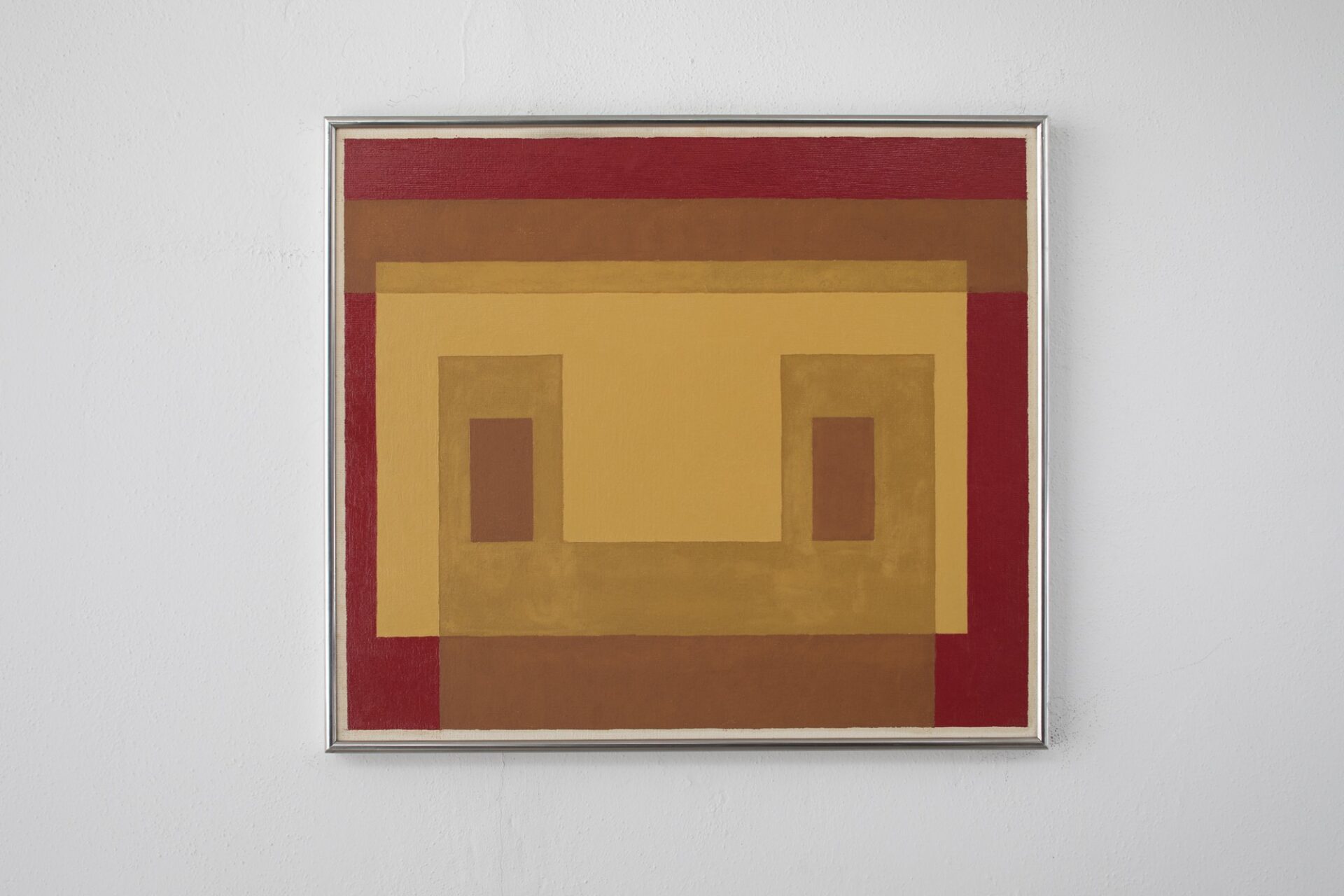Josef Albers was born in Bottrop, Germany, and studied art in Essen and Munich before entering the Bauhaus in Weimar in 1920; he later taught at the Bauhaus in Dessau. In 1933, he emigrated to the United States, becoming the head of the art department at Black Mountain College, near Asheville, North Carolina. Albers had his first solo exhibition in New York in 1936, at the New Art Circle gallery, and a retrospective of his work was held at the Museum of Modern Art, New York, 1971. “I’ve seen a lot of paintings by Albers,” wrote Donald Judd, “often singly, over half the world. They are always amazingly beautiful.”1
This work is part of a series referred to as Variants or Adobes, which Albers began in 1947 after spending a year in Mexico. “Naples yellow” refers to the name of the color Albers applied with a palette knife to the rectangular middle section of the painting, which he noted in a detailed inscription on the reverse.
Of the construction of the Variants series, Albers wrote:
All Variants are built on an underlying checkerboard-like structure. This provides a definite relationship of all parts and therefore unification of form. . . .
The underlying units—square or oblong—permit a precise relationship of the areal qualities of the colors used. In each painting the areas of the various colors are in most cases equal, sometimes of a quantity two or three times as large.
As to the colors themselves, they are unmixed.2
